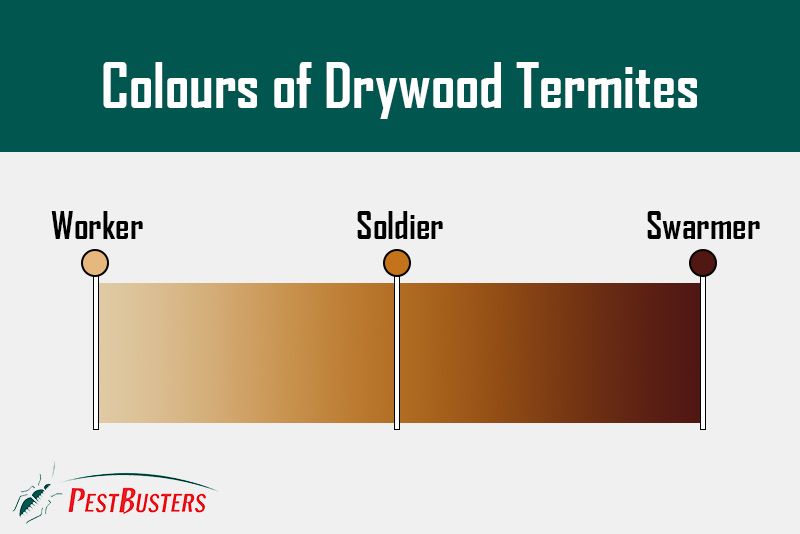It can shock you when you suspect that you might have a termite infestation, but exactly what type is making itself at home in your house?
There are three common types of termites: subterranean, drywood and dampwood. In this article, you are going to find out more about drywood termites and drywood termite treatment.
IDENTIFYING DRYWOOD TERMITES
As by their name, drywood termites are most commonly found in sources of dry wood. This means that wood found in your furniture, doors, walls and more are prone to termite damage as long as they are exposed for termites to enter. Your furniture would sound hollow, and eventually break down due to its weakened structure. Drywood termites do not require moisture or soil contact unlike subterranean termites and can create their colony entirely by living on the wood structures in your house.

In a colony, there are worker termites, soldier termites and swarmers. Cream in colour, worker termites would look white against wood surfaces. Swarmers are brown-coloured and they also have wings of the same length while soldier termites are in between cream to brown colours.
From the different classes within a termite colony, the absence of wings from their swarmers is one way that you can tell the difference between drywood termites and subterranean termites swarmers. This is because after swarming, drywood swarmers tend to shed their wings almost immediately and when you spot dead swarmer bodies, they usually would no longer have their wings attached to their bodies. Subterranean swarmers, on the other hand, will be found with and without their wings when they die.
If you are living in a home with termites, other than structural damage, those in your family who have allergy reactions and even asthma attacks will be infected. As drywood termites are hidden in the wood they are feeding on, it will be difficult to spot them. But that does not mean that they leave no traces behind. Here’s how you can recognise some of the typical signs of drywood termites:

DRYWOOD TERMITE TREATMENT METHODS
Now that you are well equipped with the knowledge of the signs of drywood termites to look out for, it is essential to know how you can control these termites, especially when you have noticed more than one sign of an infestation. There are a few tips and treatments that you can consider:
- The most obvious tip is to remove dry wood from your place where termite activity would most probably be evident at. Keep firewood and other lumber away, and you will be eliminating these possible “homes” that the drywood termites can form their nests in.
- You can also use paint, varnish or sealant to seal up unfinished wood. This is a tedious job that will take time and effort but having such finishing products on your wood surfaces will prevent termites from making tunnels in your furniture.
- But if things are getting a bit out of hand, professional termite control company like Pestbusters can help you treat infested wood and take care of your termite problem. The exact cost of the treatment is subjective, depending on the company that you have engaged. You can expect to pay a few hundred dollars based on the frequency of the services but pest control is a real value for money. Pest exterminators will do the job for you such that you would not have to do it yourself ever again.
If you suspect there’s a termite infestation in your home, don’t wait too long to contact us as you may prolong the chance of termite infestation in and around your house. Contact us at (+65) 6288 2828 or 24-hour response (+65) 9180 9990 or enquire online today for the total pest control services!
